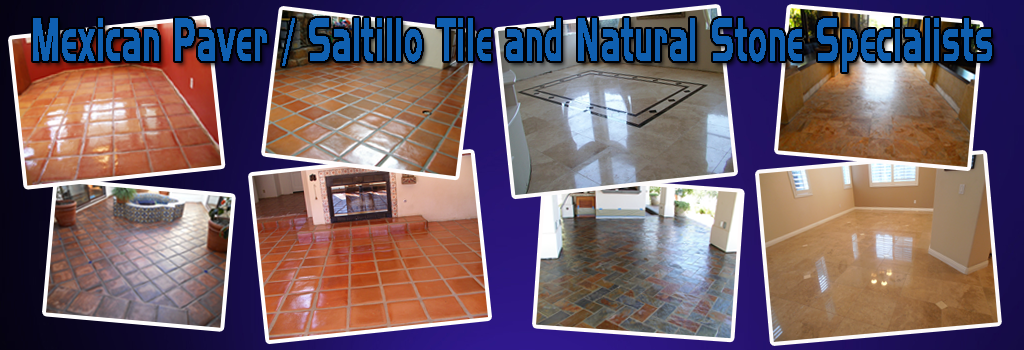Why should I have my tile and grout cleaned?
Dirt, germs and bacteria build up over time dulling your tile’s appearance and discoloring your grout. Therefore, it is necessary to clean and protect them to preserve the tiles and keep them looking great while creating a more hygienic environment. A thorough, professional tile and grout cleaning is the only way to remove the deep-down dirt.
How often should I have my floors cleaned?
Generally speaking, about every 12-18 months. There are many factors to consider when determining the frequency of cleaning. Foot traffic, children, pets, and routine floor maintenance will affect how often you need to have your tile & grout cleaned. Having a sealant applied to your floor will extend your time between professional cleanings.
What method do you use to clean my tile and grout?
Surface specific cleaners are combined with a high pressure rotary dirt extraction system and / or rotary scrubbing machine. The turbo dirt extraction system uses high pressure dual rotating jets to blast dirt from your tile and grout while and industrial strength vacuum system instantly sucks up loosened soil.
Will there be any dust created during the restoration of my floor?
No. These procedures are “wet” procedures, and do not create any dust.
What is the difference between cleaning and stripping?
Cleaning will effectively remove dirt from the surface of tile, stone and grout. When a surface is sealed with a topical or film forming sealer rather than a penetrating sealer or impregnator, it will require an occasional stripping procedure. Some dirt may have been ground into the sealer making it impossible to remove with just a cleaning procedure. Stripping removes all sealers and coatings down to bare tile and grout. If a floor is routinely maintained properly, the period between stripping procedures can be 10 years or longer. Several factors such as water damage, improper cleaning / re-coating procedures, or use of harsh chemicals can dramatically reduce this period. Once a floor has been completely stripped, it can be re-sealed to near new condition.
Why should I have my floors sealed?
Grout and some types of tile are porous materials that absorbs soil and spills. Having a sealant applied will help create a protective barrier, giving you more time to clean up dirt and liquid spills before they soak into the grout. The type of sealant you choose will determine the degree of stain resistance and appearance. Keeping your floors properly sealed eases cleaning and provides enhanced protection and beauty. Cleaning and sealing your floors every year or so will insure that they remain beautiful and stain resistant.
Will sealing my tile, stone or grout make it waterproof?
While sealing a porous surface will reduce its ability to absorb water, the answer here is NO. Sealers are designed for stain repellant purposes, not waterproofing.
How long do I need to stay off the floor after being sealed?
On floors sealed with a penetrating sealer or impregnator we recommend that you wait at least an hour before walking on the floor to allow the sealant to dry. It will take 24 hours for the sealant to cure completely, so we suggest that you avoid any liquid coming in contact with the sealant during that time. If a topical or film forming sealer was applied, you should wait at least 2 hours before walking on the floor. This type of sealer will continue to harden or cure for 72 hours. Avoid liquid contact during that time. Also it is best to leave furniture off the sealed areas for 48 hours.
What should I use to clean my floors after they have been sealed?
To preserve the life of the sealant, we recommend that you use a PH neutral or "stone safe” cleaner and cool water on your floor. Rinsing after mopping will also help keep your floors looking their best. Drying the floor with a soft terrycloth towel will insure there is no cleaner residue or streaks. Avoid bleach, ammonia, vinegar and other harsh chemical cleaners as these will weaken the sealant and cause it to fail prematurely. See the “Floor Care Tips” page for more information.
My stone has been sealed so why do I still seem to getting random dull spots?
Sealing DOES NOT prevent etching. Sealing your stone inhibits staining. More than likely these are not water spots, but an etch mark in the surface of the stone. This is what happens when an acidic substance comes in contact with any calcium based stone. To get rid of the etch marks, the stone will need to be re-polished. If the etching is too severe, it may not come completely out.
My Natural Stone countertops are no longer shiny. What can be done?
Most of the time it turns out that some sort of film is sitting on the surface. This happens when you do not use the proper cleaner, or when you clean your granite surface with water and dish soap. A professional cleaning and sealing will not only remedy this problem, it will also revive your granite’s vibrant colors.
Why won’t the water spots on my Marble or Travertine clean up?
Many of our food, personal hygiene and cleaning products contain some sort of acid. More than likely these are not water spots, but an etch mark in the surface of the stone. This is what happens when an acidic substance comes in contact with any calcium based stone. To get rid of the etch marks, the stone will need to be re-polished. If the etching is too severe, it may not come completely out.
Is there routine, daily or weekly maintenance I should be performing?
The #1 culprit of damage to floors is dirt, (grit, sand & dust). The best treatment for your floor is a dry, untreated microfiber dust mop or vacuum, used every day when possible. Damp mopping is recommended on a weekly basis and whenever there are visible spills. ALWAYS vacuum before using a wet mop. More information can be found on the “Floor Cleaning Tips” page.
Will my area rugs harm my floor?
Rugs are a good idea to catch dirt and grit. However, there are a few things to keep in mind. It is important to use rug holders designed to go under rugs to keep them in place. Sliding rugs are not only dangerous, they are a constant source of new scratches. DO NOT use rugs that are backed with rubber or latex without a suitable rug holder.
My floors had a beautiful shine when new. How can I restore that new shine?
If your floor is not deeply scratched, surface polishing may bring back an acceptable shine. However, existing scratches may remain. If your floor has worn badly, a complete restoration is warranted.






